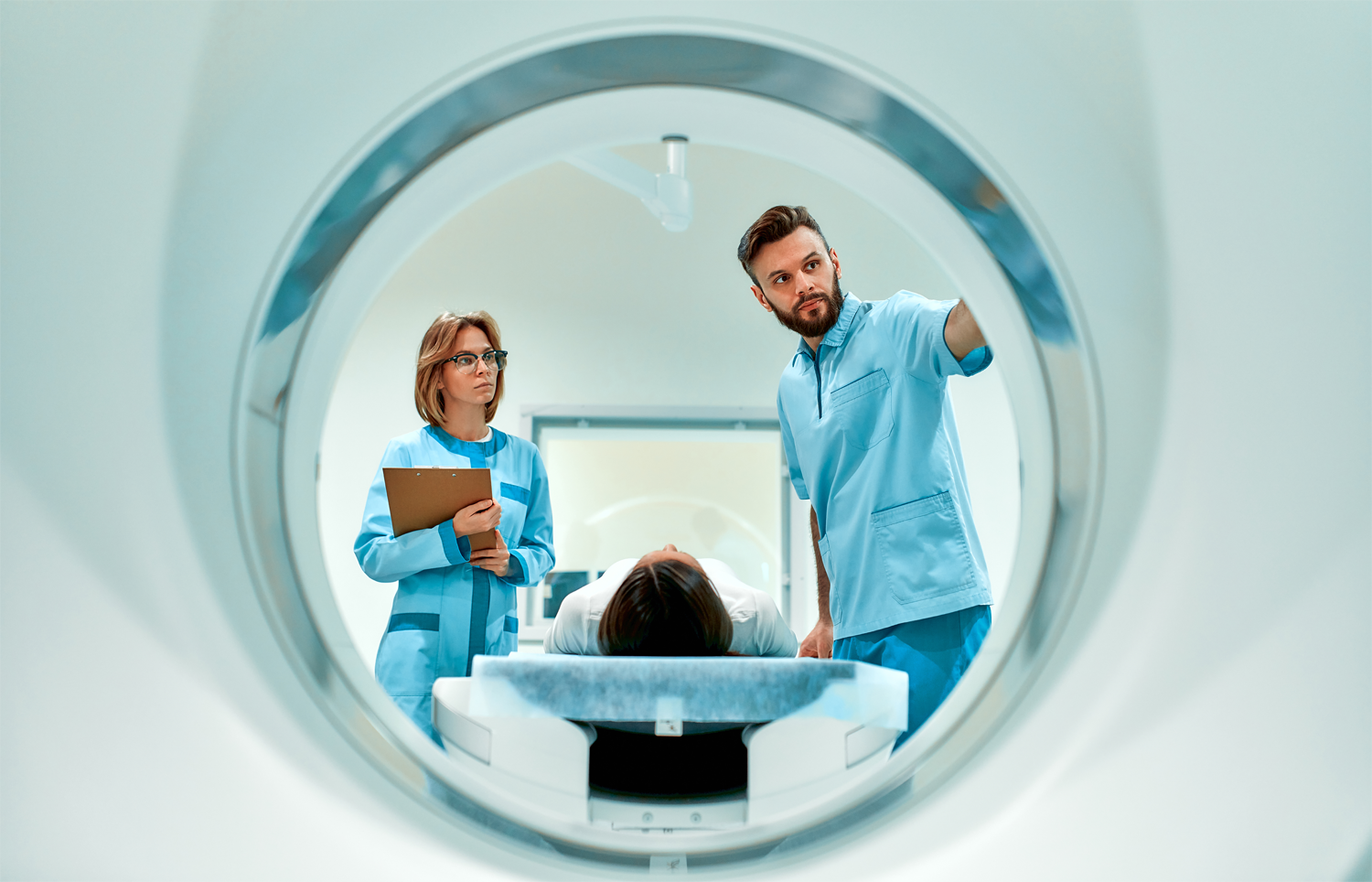Scientific Publications.
For years the number of publications on structured reporting has been increasing. Find below a selection of publications which display benefits and more.
Publications
Structured reporting has the potential to reduce reporting times of dual-energy X-ray absorptionetry exams.
"Template-based structured reporting of DXA might lead to shorter reporting times and increased report quality. Reporting times were shorter for SRs in both radiology residents and medical students with median reporting times of 2.7 min (residents: 2.7, medical students: 2.7) for SRs and 6.1 min (residents: 5.0, medical students: 7.5) for FTRs. Information extraction was perceived to be significantly easier from SRs vs FTRs (P < 0.001)."

Routine Use of Structured Reporting in Whole-body Trauma CT Facilitates Quality Improvement.
“SR has the potential to facilitate process improvement for WBCT in trauma in the daily routine with a reduction of reporting time and reporting mistakes while increasing referrer satisfaction. The mean reporting time was lower when using SR (65 ± 52 min. vs. 87 ± 124 min., p = .25). After 4 months, the median reporting time was significantly lower with SR (p = .02). Consequently, the rate of reports that were finished within one hour rose from 55.1 % to 68.3 %.”
The use of structured reporting of head and neck ultrasound ensures time-efficiency and report quality during residency.
"The use of SRs of head and neck ultrasound studies results in an increased longitudinal time-efficiency while upholding the report quality at the same time. Superior outcomes in terms of comprehensiveness, legibility and time-efficiency can be observed immediately after implementation. Reports done using SR were finalized significantly faster (99.1 s vs. 115.0 s, p < 0.001) and user contentment was significantly better when using SRs (8.3 vs. 6.3, p < 0.001). In particular, only SRs showed a longitudinally increasing time efficiency (- 20.1 s, p = 0.036) while maintaining consistent completeness ratings."

Structured reporting of CT examinations in acute pulmonary embolism.
"Referring clinicians perceive structured CTPA reports as superior in clarity. Pulmonologists also appreciate structured reports as providing better content and clinical utility. Overall, SR received higher ratings for content (median rating 10.0 vs. 8.5, p < 0.0001) and clarity (median rating 10.0 vs. 8.0). The clinical utility of radiology reports improved with SR overall (p = 0.004) and for pulmonologists (p = 0.0005)."

Structured reporting adds clinical value in primary CT staging of diffuse large B-cell lymphomas.
"SR of CT examinations for primary staging in patients with DLBCL adds clinical value compared to FTRs by increasing completeness of reports, facilitating information extraction and improving patient management. SRs contained information on affected organs more often than FTRs (95 % vs. 66 %). More SRs commented on extranodal involvement (91 % vs. 62 %). Sufficient information for Ann-Arbor classification was included in more SRs (89 % vs. 64 %). Information extraction was quicker from SRs (median rating on 10-point Likert scale=9 vs. 6; 7-10 vs. 4-8 interquartile range)."
Structured Reporting of Rectal Magnetic Resonance Imaging in Suspected Primary Rectal Cancer: Potential Benefits for Surgical Planning and Interdisciplinary Communication.
"SR of rectal MRI in patients with rectal cancer facilitates surgical planning and leads to a higher satisfaction level of referring surgeons in comparison to FT reports. Abdominal surgeons were more confident about report correctness and further clinical decision making on the basis of SRs. SR achieved significantly higher satisfaction rates with report content and clarity, and included significantly more of the 13 predefined key features compared with FT reports (SRs: mean ± SD, 12.2 ± 4.6 [range, 9-13] versus FT reports: mean ± SD, 9.2 ± 10.8 [range, 5-13]) (P < 0.001)."
